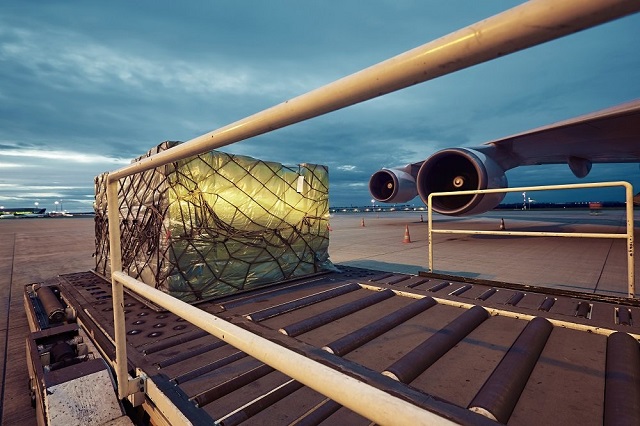
AVIATION DIGEST | JARED KALERA | The news from the aviation world has in the past two years been particularly depressing. Almost every player globally has been crying, supposedly due to the effects of the COVID-19 pandemic on the industry.
Do not be fooled however. Losses in the airline business did not start with the COVID-19 pandemic. There are lots of examples of airlines that have either closed shop or been making losses even prior to the pandemic.
European airlines especially have been in the news for making losses and going bankrupt. Air Berlin, Wow air and most shockingly Thomas Cook have closed shop. Many African airlines too have gone off the radar, and others really struggling.
Bloomberg in its 2021 October report, predicted a $200 billion loss world wide while Statista predicted a 51.86 billion loss for 2021 and a 137.76 billion loss for 2020 world wide.
Kenya Airways is on spot for making a $333 million in 2020 while Uganda Airlines made a $107 million loss.
The Africa Report in a post on 17th March 2021 quoted Rwandan Finance and Economic Planning Minister Uzziel Ndagijimana as saying, RwandaAir was not at the time profitable but a good catalyst for the Economy.
But why the losses all over the world?
First we should recognize that the airline industry is an asset-intensive, heavily leveraged and of low profit margin. It’s a business of high fixed and variable costs.
Fixed costs include insurance, rentals , salaries, taxes, fees and licences.
While the biggest variable costs according to Investopedia include fuel, labor and equipment.
Labor takes 35% of operating costs give or take. In stormy times, airlines will quickly reduce on the labor force. During the COVID pandemic, airlines all over the world retired and dismissed most of their employees. This labor force which among others includes pilots, engineers and expert technicians of various fields is highly skilled, expensive and competitive. These expenditures clip off targeted profits.
Fuel is a big factor in curving out a profit margin. Pilots fuel what is called Block fuel (the total fuel in all the tanks). But this is divided into different segments.
Taxi fuel which also runs the auxiliary power unit. Trip fuel which is fuel from take off to landing at the next airport. Contingency fuel which should at least last five minutes in case of an abrupt delay as you come in to land.
Then there is alternate fuel which will be used in case you are diverted to an alternate airport. Final reserve fuel to manage a holding pattern at least for 30 minutes then the extra fuel which is discretionary .
A typical example to illustrate this is the Airbus A330- 800 like the ones owned by Uganda Airlines.
According to Quora.com, this plane uses 4.7 tons per hour . A flight from Entebbe to Dubai takes approximately 5hrs 35min. This means for trip fuel, you need 24.5 tons of fuel.
Each metric ton as of 8th March 2022 costs approximately 898.2 USD on the Ugandan market . This gives you a total of 22,005.9 USD. Remember you have to add more tons of taxi fuel, alternate fuel, reserve fuel ,extra fuel which may take you to approximately 27.5 tons. The volatility of the oil market will always spiral fuel prices leading to unprofitable operations at no notice..
The Second cause of losses is cash flow issues.
Cash flow is the money that comes in and goes out of a company . It’s the generation of income and the payment of expenses . Most airlines sale tickets months in advance. When that time comes, the flights have to happen whether fully sold or not. For example flights to tourism destinations will be over booked during peek season and half booked during off season. However overhead and variable costs will remain the same leading to airlines defaulting on debt, loan and expenses defaulting due to cash flow problems.
African airlines especially face this problem due to low domestic flights . They are unable to compete with well established international airlines for the more lucrative international routes. These international routes are monitored by tough IATA safety and regulatory standards that if implemented will erode any anticipated profits , leading to low sales, incomes and poor cash flows.
Third reason is expensive passenger comfort costs.
These are amenities that airlines have to spend on to keep passengers comfortable . More leg room and wider seats means less seating capacity . Healthier and better meals ,drinks and cutlery means more expenditure. Modern active noise control systems ,in-seat lighting or lie-flat seats in private ipods are all expensive .
Airlines spend millions of dollars to make over the interiors of old planes which include six way adjustable headrests with height adjusted ranges. IFE controls ,USB sockets, hand sets Wifi, better air quality systems with anti-microbial UV lighting will pull you back handsomely.
Fourth is the management and government policies and decisions.
The network design, that is, how, when and where to go. Factors like the average number of competitors on a route, number of hubs and frequency on a route. How does an airline deal with demand? Will you create demand( stimulate )for example where people do not go to a particular destination because of cost or because the time taken is unbearable…. how will you stimulate them to take your flights?
The other way is to capture demand ( where there is competition but you create a competitive option either by cheaper fares, better onboard services, more leverage with baggage weights, faster connecting times).
For example, in October 2018, Kenya Airways took on direct flights to New York, reducing the flight time to only 15 hours from approximately 18 hours through other connecting competitors ,which could have been a good decision. But unfortunately ,how sustainable was it? It has already reduced the flights to 2 weekly due to low demand .
The policy of an airline will decide on either low cost or full service airline. Long haul or short point to point flights. The costs will normally be the same ,whether long haul or short. The difference will normally be with fuel due to the distance .
Finally among others are extenuating factors divided into two: price shocks and demand shocks.
Price shocks occur when factors influence the price of fuel which affects ticket prices while demand shocks occur when external factors like pandemics, recessions , or other natural factors like the volcanic eruption in 2010 that disrupted the entire Europe and cut demand for flights. These will effectively ground crafts leading to heavy losses. Airlines find themselves crumbling in such situations.
For example, airlines in Russia have all but closed shop since they can not operate out of Russia, cannot service their crafts or receive spares from Europe due to international sanctions . This is a demand shock that no one either anticipates or has a quick way around. With no passengers risking to travel out ,Russian airlines will have to foot heavy lease bills to aircraft owners who have to be paid irrespective of the circumstances.
One could enumerate as many other reasons why airlines make losses .
In our next article, we will discuss whether to lease or directly purchase crafts.
*******
 Jared is an aviation researcher and trained motor rally safety official. He is the General Manager Legal Compliance and Human Resource, Muttico Technical Services Ltd and co director at Amputee Self Help Network Uganda.
Jared is an aviation researcher and trained motor rally safety official. He is the General Manager Legal Compliance and Human Resource, Muttico Technical Services Ltd and co director at Amputee Self Help Network Uganda.
 The Independent Uganda: You get the Truth we Pay the Price
The Independent Uganda: You get the Truth we Pay the Price



Am so great full to this kind of information. Thank you for sharing with us .